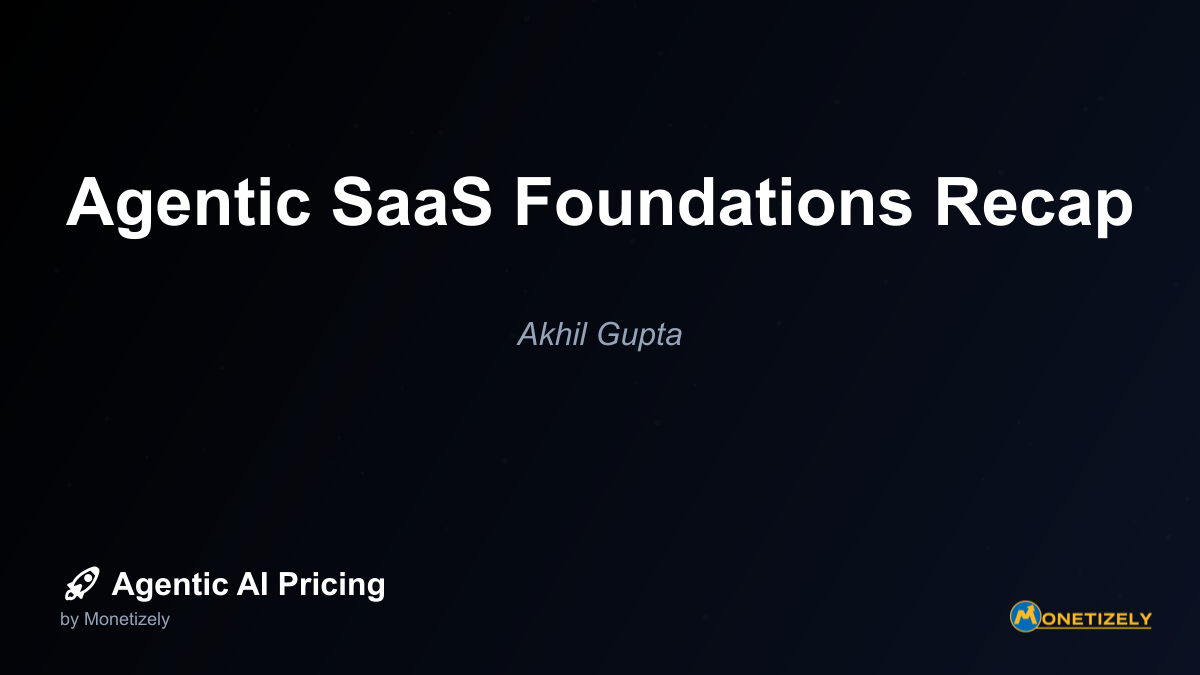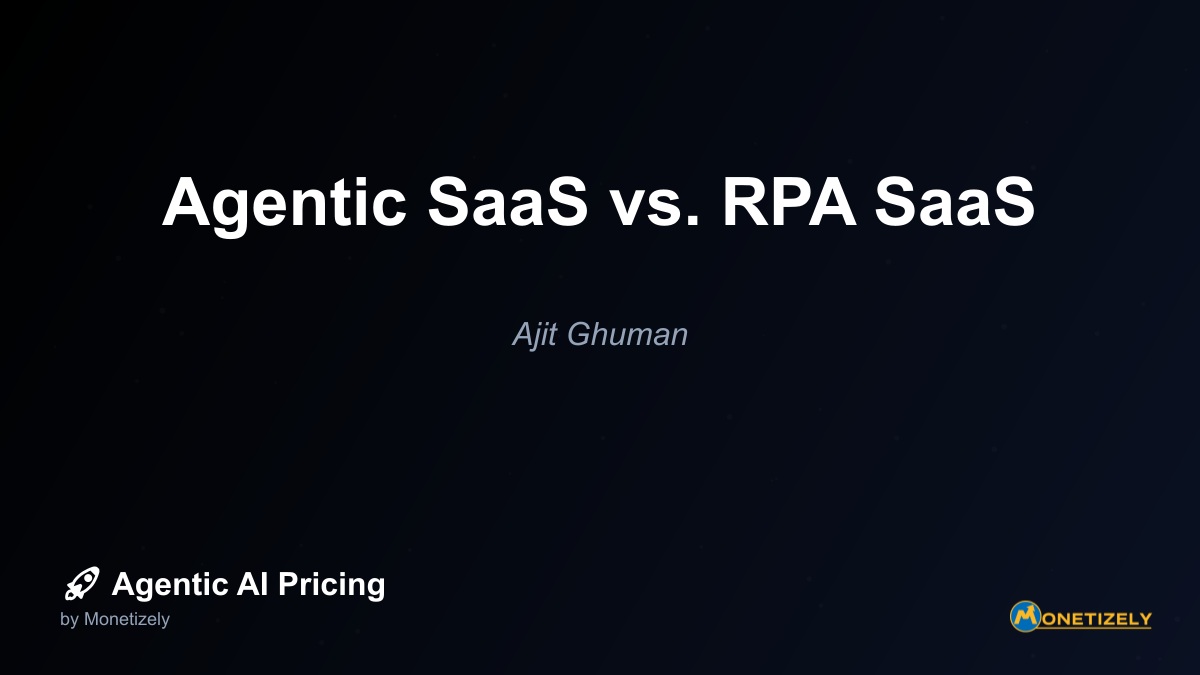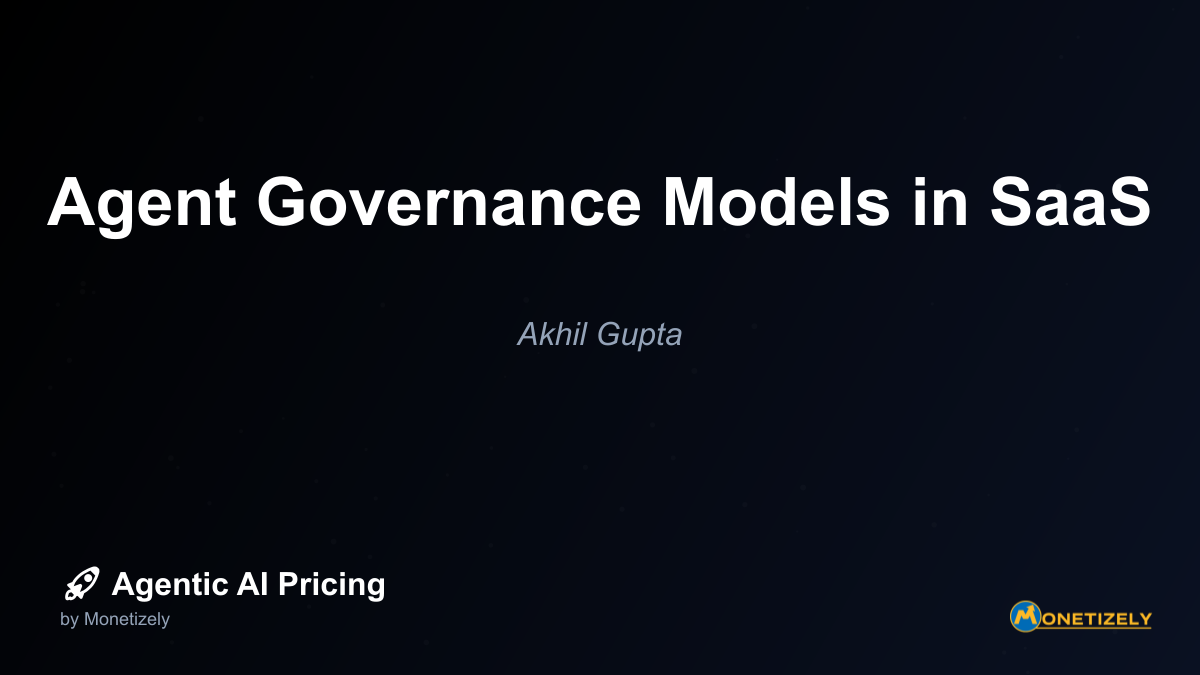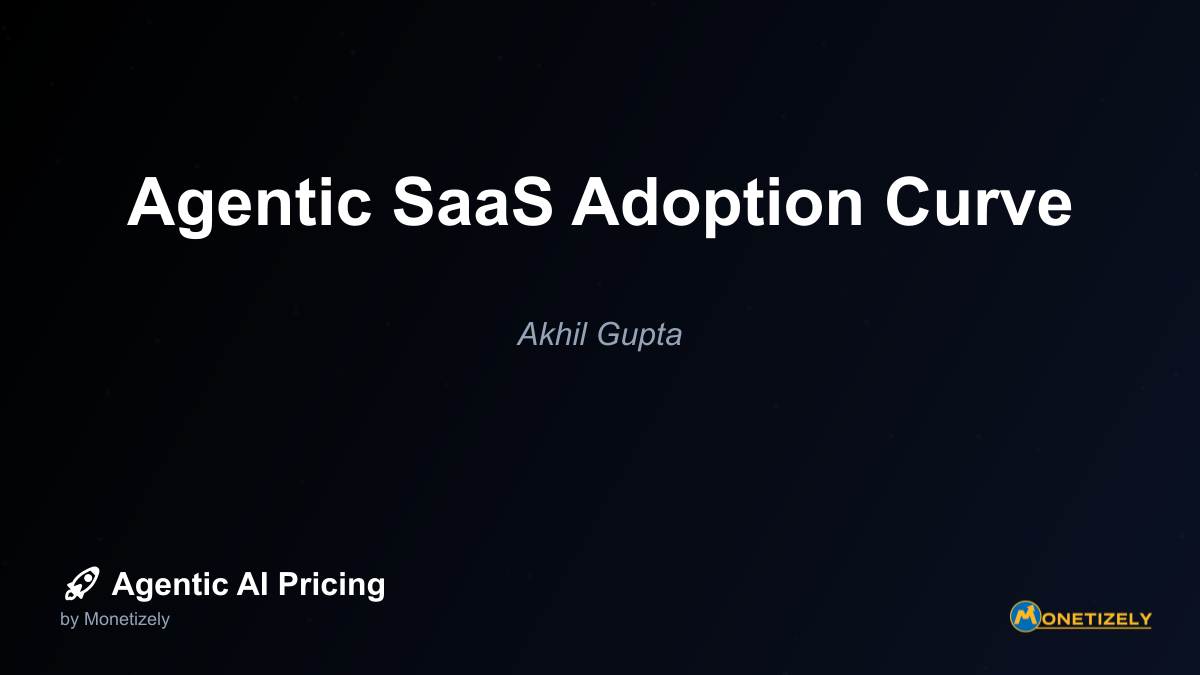· Akhil Gupta · Agentic SaaS Fundamentals · 5 min read
Key Differences: SaaS vs. Agentic SaaS
AI and SaaS Pricing Masterclass
Learn the art of strategic pricing directly from industry experts. Our comprehensive course provides frameworks and methodologies for optimizing your pricing strategy in the evolving AI landscape. Earn a professional certification that can be imported directly to your LinkedIn profile.
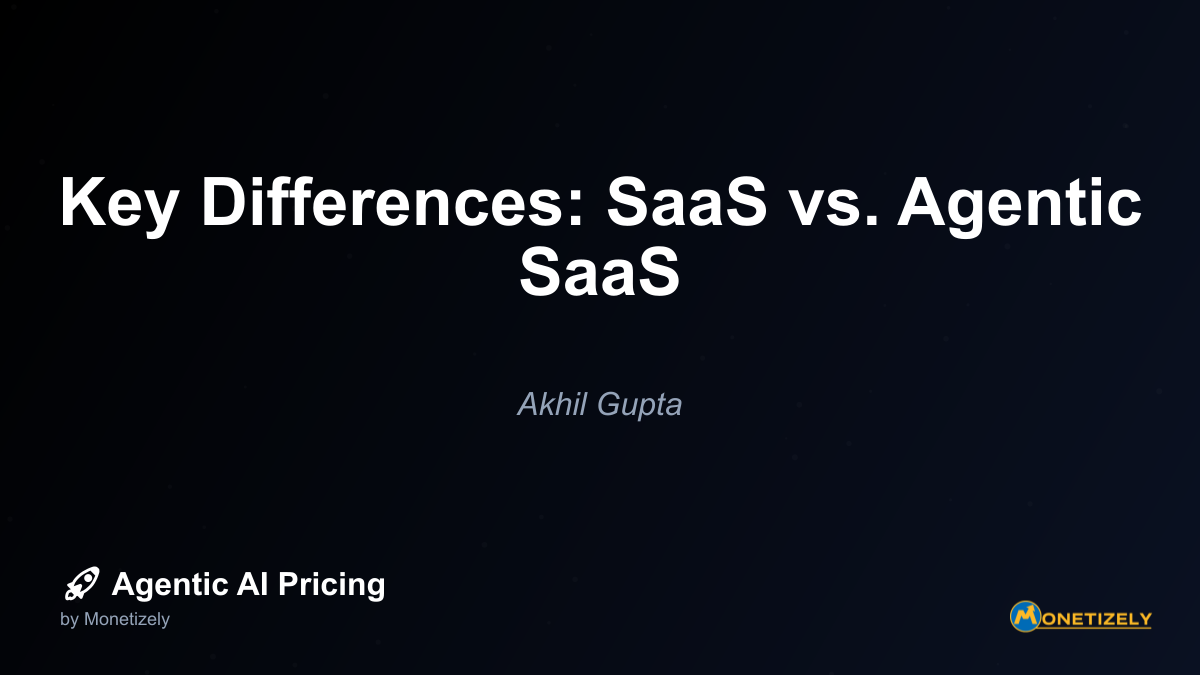
Real-World Examples of the Shift
To illustrate the distinction between traditional and agentic SaaS, consider these examples across different functions:
Customer Support
Traditional SaaS: A helpdesk platform that routes tickets, provides knowledge base access, and facilitates human agent responses. Human agents still read, interpret, and respond to customer inquiries.
Agentic SaaS: A support system where AI agents autonomously handle tier-1 support, resolving common issues without human intervention, escalating only complex cases, and continuously learning from interactions to improve resolution rates.
Sales and Marketing
Traditional SaaS: A CRM that organizes prospect data, tracks interactions, and provides analytics to human sales teams who make outreach decisions and handle communications.
Agentic SaaS: An autonomous sales development platform that identifies prospects, crafts personalized outreach, conducts initial conversations, qualifies leads, and only involves humans for high-value closing conversations.
Finance
Traditional SaaS: An accounting platform that organizes financial data, facilitates manual entry and reconciliation, and generates reports for human analysis.
Agentic SaaS: A financial operations system where agents autonomously process invoices, reconcile accounts, flag anomalies, and generate insights without requiring constant human oversight.
Identifying Where Your Product Falls on the Spectrum
Few products are purely traditional or purely agentic. Most exist on a spectrum, with varying degrees of agency across different functions. To assess where your SaaS offering falls, consider these questions:
Decision Autonomy: Can the software make meaningful decisions without human approval for each step?
Process Completion: Can it execute complete workflows or only components that require human connection?
Learning Capability: Does it adapt behavior based on outcomes and feedback without explicit reprogramming?
Initiative: Can it proactively identify opportunities or issues without being prompted?
Explanation: Can it articulate the reasoning behind its actions and decisions?
The more “yes” answers, the closer your product is to the agentic end of the spectrum.
Transitioning from Traditional to Agentic SaaS
For companies looking to evolve from traditional to agentic models, the journey involves more than adding AI features. It requires rethinking fundamental aspects of the business:
Product Development
- Shift from feature-centric to outcome-centric development priorities
- Build robust governance mechanisms and oversight capabilities
- Develop training mechanisms that allow agents to improve over time
- Create clear boundaries and safeguards for autonomous operation
Go-to-Market Strategy
- Educate customers on the new value proposition and how to measure ROI
- Develop case studies that highlight outcome improvements, not feature benefits
- Train sales teams to sell outcomes and capabilities rather than features and interfaces
- Create adoption frameworks that help customers transition organizational processes
Pricing and Packaging
- Experiment with outcome-based and value-share pricing models
- Develop clear metrics for measuring and attributing outcomes
- Create pricing tiers based on autonomy levels and decision authority
- Consider hybrid models that combine subscription and outcome components
Learn more about creating successful outcome-based pricing strategies for agentic SaaS.
Customer Success
- Redefine success metrics around outcomes rather than usage
- Develop governance frameworks to help customers manage agent performance
- Build transparency tools that provide visibility into agent decision-making
- Create feedback mechanisms that improve agent performance over time
Challenges in the Transition
Moving from traditional to agentic SaaS presents significant challenges:
Technical Challenges
- Building truly autonomous capabilities requires advanced AI expertise
- Ensuring reliability and consistency in autonomous decision-making
- Creating appropriate safeguards and oversight mechanisms
- Developing explainability so users understand agent actions
Business Challenges
- Educating the market on the new value proposition
- Managing the cash flow implications of new pricing models
- Restructuring customer success and support functions
- Addressing customer concerns about job displacement
Ethical and Regulatory Challenges
- Ensuring appropriate human oversight of consequential decisions
- Managing liability for agent actions and decisions
- Addressing data privacy concerns with more autonomous systems
- Navigating emerging regulations around AI autonomy
The Future of Agentic SaaS
As agentic SaaS continues to evolve, several trends are emerging:
Multi-agent ecosystems: Rather than single agents, we’ll see collaborative systems of specialized agents working together to accomplish complex objectives.
Human-agent collaboration models: The most effective systems will blend human and artificial intelligence, with each handling the tasks they’re best suited for.
Outcome marketplaces: Platforms where businesses can “shop” for specific outcomes, with agents competing to deliver results most effectively.
Governance frameworks: Standardized approaches to managing agent autonomy, ensuring appropriate oversight while maximizing benefits.
Value-based economics: Economic models that tie compensation directly to measurable value creation rather than inputs or activities.
Discover how investors evaluate agentic SaaS pricing metrics.
Implications for SaaS Leaders
For executives navigating this transition, several strategic imperatives emerge:
Reassess your value proposition: Understand how your offering creates value in an agentic context and how that differs from traditional models.
Experiment with pricing models: Test outcome-based and value-share approaches alongside traditional models to find the right fit.
Invest in outcome measurement: Develop robust capabilities to measure, attribute, and communicate the outcomes your solution delivers.
Rethink organizational structure: Consider how sales, customer success, and product teams need to evolve to support agentic models.
Develop governance expertise: Build capabilities to help customers effectively govern autonomous systems and manage the associated risks.
Conclusion
The distinction between traditional and agentic SaaS represents far more than a technical evolution—it’s a fundamental business model transformation. As software transitions from tool to agent, everything from development priorities to pricing models must evolve accordingly.
This shift creates enormous opportunities for providers who can successfully deliver autonomous capabilities while helping customers navigate the transition. It also presents significant challenges in pricing, measurement, governance, and organizational change.
For SaaS leaders, the key is recognizing that agentic capabilities require business model innovation, not just technical development. Those who successfully align their pricing and go-to-market strategies with the new value proposition will be positioned to capture disproportionate value in this emerging paradigm.
As the agentic SaaS market matures, we’ll likely see further innovation in pricing models, with increasingly sophisticated approaches to measuring and capturing the value of autonomous capabilities. The companies that lead this evolution will define not just how AI is monetized, but how businesses organize around and interact with intelligent systems in the coming decades.
Co-Founder & COO
Akhil is an Engineering leader with over 16+ years of experience in building, managing and scaling web-scale, high throughput enterprise applications and teams. He has worked with and led technology teams at FabAlley, BuildSupply and Healthians. He is a graduate from Delhi College of Engineering and UC Berkeley certified CTO.
Pricing Strategy Audit
Let our experts analyze your current pricing strategy and identify opportunities for improvement. Our data-driven assessment will help you unlock untapped revenue potential and optimize your AI pricing approach.

